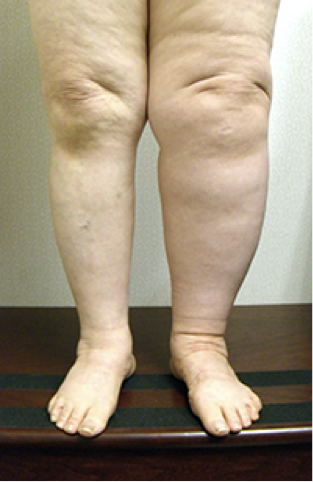Lymphedema
Some chronic swelling of the extremities may be due to lymphedema, an obstruction of microscopic channels which pump and carry lymph fluid from the extremities back to the bloodstream in the chest. Lymphedema often presents as swelling at the toes or on the top (dorsum) of the foot though it may also involve the entire extremity.
Some patients are born with swelling in the extremities due to lymphedema and others develop lymphedema later in life. Abnormalities of the lymphatic channels present at birth result in congenital lymphedema; others will develop lymphedema due to obstruction from recurring cellulitis or soft tissue infections, surgical procedures, or compression by abdominal obesity or tumor growth. Lymphedema may be caused by internal production of tissue fluid such as by infection or high pressure in the veins due to venous insufficiency or venous obstruction. Morbidly obese patients with venous insufficiency usually have a component of lymphedema as well.
Mild lymphedema may be treated with elastic compression hose and periodic elevation of the legs higher than the heart. Evaluation and treatment of any underlying disorders is important as well. Severe lymphedema may require manual lymphatic drainage (MLD) therapy, a series of physical therapy treatments involving massage and compression wraps to reduce the degree of limb swelling.
Some patients require daily use of compression pumps and sleeves on the involved limb to help pump the lymph fluid out of the limb. Untreated lymphedema usually will get worse and may even cause other complications.


